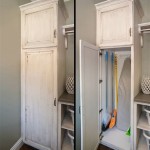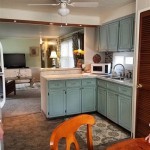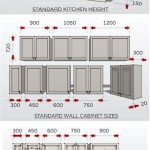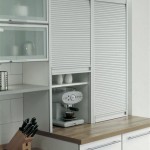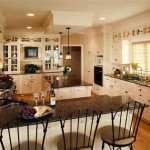Essential Considerations for Illuminating Your Kitchen Cabinets
Installing lights in kitchen cabinets is a brilliant idea that can transform your kitchen's functionality and ambiance. Proper illumination can make your kitchen more efficient, improve safety, and create a more inviting space. To achieve optimal results, consider these essential aspects:
Light Placement and Spacing
Strategic placement of lights is crucial for effective illumination. Consider placing lights beneath the cabinets to provide task lighting for countertops and sinks. For upper cabinets, lights installed within the units themselves or above the top edge can provide ambient lighting and accentuate the contents of your shelves. It's also important to ensure adequate spacing between lights to prevent hotspots and ensure even distribution of light.
Type of Lights
Choosing the right type of lights is essential for both functionality and aesthetics. LEDs are an excellent option due to their energy efficiency, long lifespan, and ability to produce a range of color temperatures. Under-cabinet lights are typically linear in design and can be easily integrated into the underside of cabinets. Puck lights can be used within cabinets to provide focused illumination for specific areas.
Color Temperature
The color temperature of your lights plays a vital role in creating the desired atmosphere in your kitchen. Warm white lights (2700K-3000K) emit a cozy and inviting glow, while cool white lights (4000K-5000K) provide a more energizing and modern feel. For optimal versatility, consider lights with adjustable color temperature to switch between warm and cool tones as needed.
Brightness and Dimming Capabilities
The brightness of your lights should be tailored to the intended purpose. Task lighting for work surfaces may require brighter lights, while ambient lighting can be more subdued. Dimmable lights allow you to adjust the brightness level to suit different activities or create a softer ambiance for dining or entertaining.
Power Source and Installation
Before installing lights, determine the power source. Plug-in lights are convenient, but hardwired lights provide a more permanent and reliable solution. If you choose to hardwire lights, consider the location of outlets and the need for an electrician's assistance. Proper installation is crucial to ensure safety and long-term performance.
Maintenance and Cleaning
To maintain the longevity of your cabinet lights, regular cleaning is necessary. Clean the fixtures regularly to remove dust and debris. Avoid using harsh chemicals or abrasive cleaners that could damage the lights or their finishes. Replace bulbs as needed to maintain optimal light output and quality.
By following these essential considerations, you can effectively install lights in your kitchen cabinets, enhancing functionality, safety, and aesthetic appeal. Proper planning and execution will ensure that your kitchen becomes a well-lit and inviting space for cooking, dining, and entertaining.

How To Install Kitchen Cabinet Lighting The Honeycomb Home

Inside Glass Cabinet Lighting How To Installing

How To Install Kitchen Cabinet Lighting The Honeycomb Home

How To Install Under Cabinet Lighting In The Kitchen Using Led Light Strips

How To Install Led Under And Above Cabinet Lighting Hooked A Wall Dimmer Switch

How To Install Kitchen Cabinet Lighting The Honeycomb Home

How To Install Under Cabinet Kitchen Lighting

Install Lights Under Kitchen Cabinets Granite Transformations Blog
How To Install Lights In Kitchen Cabinets Quora

How To Install Led Under And Above Cabinet Lighting Hooked A Wall Dimmer Switch

